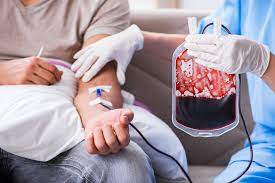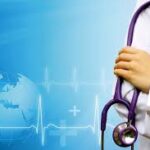The eighth meeting of the Emergency Committee convened by the WHO Director-General under the International Health Regulations (2005) (IHR) regarding the coronavirus disease (COVID-19) took place on Wednesday, 14 July 2021 from 11:30 to 16:00 Geneva time (CEST).
Proceedings of the meeting
Members and Advisors of the Emergency Committee were convened by videoconference.
The Director-General welcomed the Committee and reiterated his global call for action to scale up vaccination and implement rationale use of public health and social measures (PHSM). He thanked the Committee for their continued support in identifying key challenges and solutions that countries can use to overcome the issues posed by the pandemic.
Representatives of the Office of Legal Counsel (LEG) and the Department of Compliance, Risk Management, and Ethics (CRE) briefed the members on their roles and responsibilities. The Ethics Officer from CRE provided the Members and Advisers with an overview of the WHO Declaration of Interest process. The Members and Advisers were made aware of their individual responsibility to disclose to WHO, in a timely manner, any interests of a personal, professional, financial, intellectual or commercial nature that may give rise to a perceived or direct conflict of interest. They were additionally reminded of their duty to maintain the confidentiality of the meeting discussions and the work of the Committee. Each member who was present was surveyed and no conflicts of interest were identified.
The Secretariat turned the meeting over to the Chair, Professor Didier Houssin. Professor Houssin also expressed concern over the current trends with the COVID-19 pandemic and reviewed the objectives and agenda of the meeting.
The Secretariat presented on the global epidemiological context, shared updates on travel guidance and measures taken by countries and provided an overview of the World Health Assembly 74’s decisions and resolutions that relate to the role and functioning of the IHR Emergency Committee. The Secretariat also highlighted factors driving the current situation including:
- variants of concern,
- inconsistent application of public health and social measures,
- increased social mobility, and
- highly susceptible populations due to lack of equitable vaccine distribution.
The Committee discussed key themes including:
- global inequitable access to COVID-19 vaccines which is compounded by use of the available vaccines beyond SAGE recommended priority populations and the administration of booster doses while many countries do not have sufficient access to initial doses;
- the need for technology transfer to enhance global vaccination production capacity,
- the importance of adapting PHSM to epidemiological and socio-economic contexts and to diverse types of gatherings,
- challenges posed by the lack of harmonization in documentation requirements for vaccination and recovery status for international travel,
- threats posed by current and future SARS CoV-2 variants of concern, and
- efforts made by some States Parties to apply a risk-management approach to religious or sports-based mass gathering events.
The pandemic remains a challenge globally with countries navigating different health, economic and social demands. The Committee noted that regional and economic differences are affecting access to vaccines, therapeutics, and diagnostics. Countries with advanced access to vaccines and well-resourced health systems are under pressure to fully reopen their societies and relax the PHSM. Countries with limited access to vaccines are experiencing new waves of infections, seeing erosion of public trust and growing resistance to PHSM, growing economic hardship, and, in some instances, increasing social unrest.
As a result, governments are making increasingly divergent policy decisions that address narrow national needs which inhibit a harmonized approach to the global response. In this regard, the Committee was highly concerned about the inadequate funding of WHO’s Strategic Preparedness and Response Plan and called for more flexible and predictable funding to support WHO’s leadership role in the global pandemic response.
The Committee noted that, despite national, regional, and global efforts, the pandemic is nowhere near finished. The pandemic continues to evolve with four variants of concern dominating global epidemiology. The Committee recognised the strong likelihood for the emergence and global spread of new and possibly more dangerous variants of concern that may be even more challenging to control.
The Committee expressed appreciation for States Parties engaging in research to increase understanding of COVID-19 vaccines and requested that clinical trial volunteers not be disadvantaged in travel arrangements due to their participation in research studies. At the same time, the risk of emergence of new zoonotic diseases while still responding to the current pandemic has been emphasised by the Committee. The Committee noted the importance of States Parties’ continued vigilance for detection and mitigation of new zoonotic diseases.
The Committee unanimously agreed that the COVID-19 pandemic still constitutes an extraordinary event that continues to adversely affect the health of populations around the world, poses a risk of international spread and interference with international traffic, and requires a coordinated international response. As such, the Committee concurred that the COVID-19 pandemic remains a public health emergency of international concern (PHEIC) and offered the following advice to the Director-General.
The Director-General determined that the COVID-19 pandemic continues to constitute a PHEIC. He accepted the advice of the Committee to WHO and issued the Committee’s advice to States Parties as Temporary Recommendations under the IHR.
The Emergency Committee will be reconvened within three months or earlier, at the discretion of the Director-General. The Director-General thanked the Committee for its work.
Advice to the WHO Secretariat
- Continue to work with States Parties to implement PHSM to control transmission, taking into account the acceptability, feasibility, costs, effects, and the balance between benefits and harms in each epidemiological and socio-economic context.
- Continue to advocate for equitable vaccine access and distribution by encouraging sharing of available vaccine doses, expanded local production capacity in low- and middle-income countries, waiving intellectual property rights, leveraging technology transfer, scale up of manufacturing, and calling for the necessary global funding. Update and disseminate guidance related to appropriate use of vaccines (including topics such as booster doses and heterologous use of vaccines).
- Expedite the work to establish updated means for documenting COVID-19 status of travelers, including vaccination, history of SARS-CoV-2 infection, and SARS-CoV-2 test results. This includes both an interim update to the WHO booklet containing the International Certificate of Vaccination and Prophylaxis and digital solutions which allow for verification of relevant information.
- Continue to strengthen the global monitoring and assessment framework for SARS CoV-2 variants and provide updated guidance to support States Parties in establishing, leveraging, and expanding genomic sequencing capacities as well as timely sharing of information, data, and samples.
- Strengthen communication strategies at national, regional and global levels to reduce COVID-19 transmission and counter misinformation, including rumours that fuel vaccine hesitancy. This will require reinforcing messages that a comprehensive public health response continues to be needed, including the continued use of PHSM regardless of vaccination coverage.
- Collect information from States Parties on their uptake and progress made in implementing the Temporary Recommendations.
Temporary Recommendations to States Parties
While the Committee noted that there are nuances associated with diverse regional contexts related to the implementation of the Temporary Recommendations, they identified the following as critical for all countries:
- Continue to use evidence-informed PHSM based on real time monitoring of the epidemiologic situation and health system capacities, taking into account the potential cumulative effects of these measures. The use of masks, physical distancing, hand hygiene, and improved ventilation of indoor spaces remains key to reducing transmission of SARS CoV-2. The use of established public health measures in response to individual cases or clusters of cases, including contact tracing, quarantine and isolation, must continue to be adapted to the epidemiological and social context and enforced. Link to WHO guidance
- Implement a risk-management approach for mass gathering events by evaluating, mitigating, and communicating risks. Recognizing that there are different drivers and risk tolerance for mass gatherings, it is critical to consider the epidemiological context (including the prevalence of variants of concern, the strength of transmission, as well as contract tracing and testing capacity) when conducting this risk assessment in line with WHO guidance. Link to WHO guidance.
- Achieve the WHO call to action to have at least 10% of all countries’ populations vaccinated by September 2021. Increased global solidarity is needed to protect vulnerable populations from the emergence and spread of SARS CoV-2 variants. Noting that many countries have now vaccinated their priority populations, it is recommended that doses should be shared with countries that have limited access before expanding national vaccination programmes into lower risk groups. Vaccination programmes should include vulnerable populations, including sea farers and air crews. Link to WHO guidance.
- Enhance surveillance of SARS-CoV-2 and continue to report to WHO to enable rapid identification, tracking, and evaluation of variants and continued monitoring of the pandemic’s evolution. To achieve this recommendation, States Parties may need to strengthen their epidemiological and virologic (including genomic) surveillance and reporting systems or share samples with countries that have this capacity. Link to WHO guidance.
- Improve access to and safe administration of WHO recommended therapeutics, including oxygen, to treat COVID-19. In addition, it is important for States Parties to conduct clinical research on and support access to care for patients suffering from post COVID-19 condition (also known as long COVID). States Parties should also continue research on therapeutics for the prevention of COVID-19 infections where feasible. Link to WHO resource.
- Continue a risk-based approach to facilitate international travel and share information with WHO on use of travel measures and their public health rationale. In accordance with the IHR, measures (e.g. masking, testing, isolation/quarantine, and vaccination) should be based on risk assessments, consider local circumstances, and avoid placing the financial burden on international travellers in accordance with Article 40 of the IHR. Link to WHO guidance.
- Do NOT require proof of vaccination against COVID-19 for international travel as the only pathway or condition permitting international travel, given limited global access and inequitable distribution of COVID-19 vaccines. Link to WHO interim position paper. State Parties should consider a risk-based approach to the facilitation of international travel by lifting measures, such as testing and/or quarantine requirements, when appropriate, in accordance with the WHO guidance. Link to WHO guidance.
- Recognize all COVID-19 vaccines that have received WHO Emergency Use Listing in the context of international travel. In addition, States Parties are encouraged to include information on COVID-19 status, in accordance with WHO guidance, within the WHO booklet containing the International Certificate of Vaccination and Prophylaxis; and to use the digitized version when available.
- Address community engagement and communications gaps at national and local levels to reduce COVID-19 transmission, counter misinformation, and improve COVID-19 vaccine acceptance, where applicable. This will require reinforcing messages that a comprehensive public health response is needed, including the continued use of PHSM alongside increasing vaccination coverage. Link to WHO risk communications resources.












